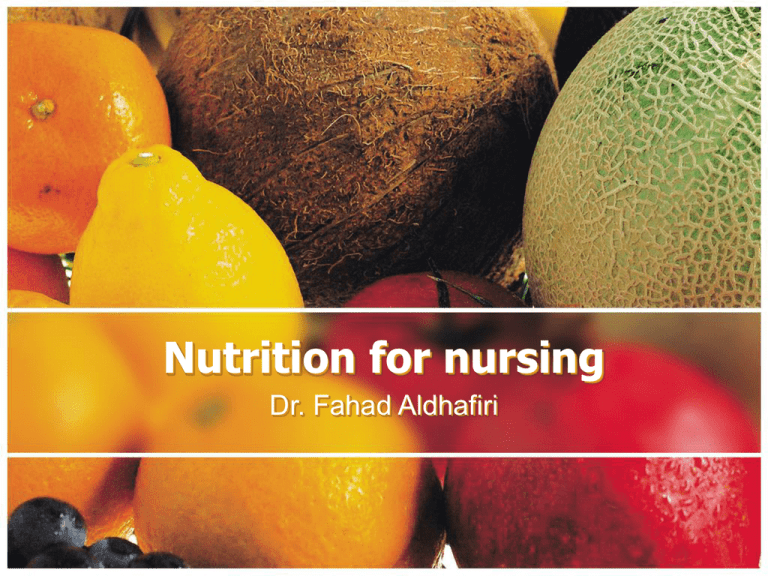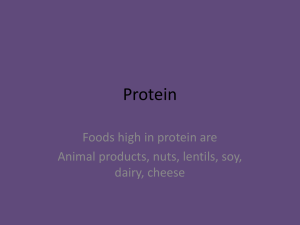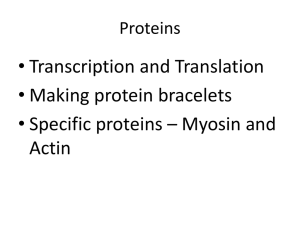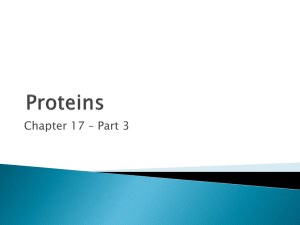المحاضرة 3
advertisement

Nutrition for nursing Dr. Fahad Aldhafiri Protein • Proteins are essential nutrients for the human body. • They are one of the building blocks of body tissue, and can also serve as a fuel source. • As a fuel, proteins contain 4 kcal per gram, just like carbohydrates and unlike lipids, which contain 9 kcal per gram. Amino acids (AA) • AA are the basic building blocks of all protein. • AA are organic compounds made from carbon, hydrogen, and oxygen atoms plus a nitrogen component, which distinguishes them from the other energy nutrients. Classification of AA • Essential amino acids: AA that cannot be made by the body; they must be consumed through food. • Non- essential amino acids: AA the body can make if nitrogen and other precursors are available. • Note: the terms of essential and non-essential refer to whether or not they must be supplied by the diet, not to their relative importance: all 20 AA must be available for the body to make proteins. Digestion Functions • Protein is a nutrient needed by the human body for growth and maintenance. • Protein can be found in all cells of the body and is the major structural component of all cells in the body, especially muscle. This also includes body organs, hair and skin. Proteins are also used in membranes. • When broken down into amino acids, they are used as precursors to nucleic acid, co-enzymes, hormones, immune response, cellular repair, and other molecules essential for life. Additionally, protein is needed to form blood cells. • Burned for energy: normally the body uses very little protein for energy. • Converted to fat (Lipogenesis): protein is converted to fat only when it is consumed in excess of need. The carbon fragment (acetyleCoA) undergoes lipogenesis to form fatty acids. • Converted to glucose. Protein in food • Complete proteins: provide all nine essential amino acids. Sources: all animal sources of protein (meat, fish, poultry, eggs, milk and diary products) • Incomplete proteins: provide all essential amino acids but have one or more limiting amino acids. Sources: all plant proteins (grains (rice, bread…), legumes, nuts and vegetables) Intake recommendation • 0.8 g/kg: 80 kg -------> 80 X 0.8 = g/kg • 10 – 15 % of total calories







